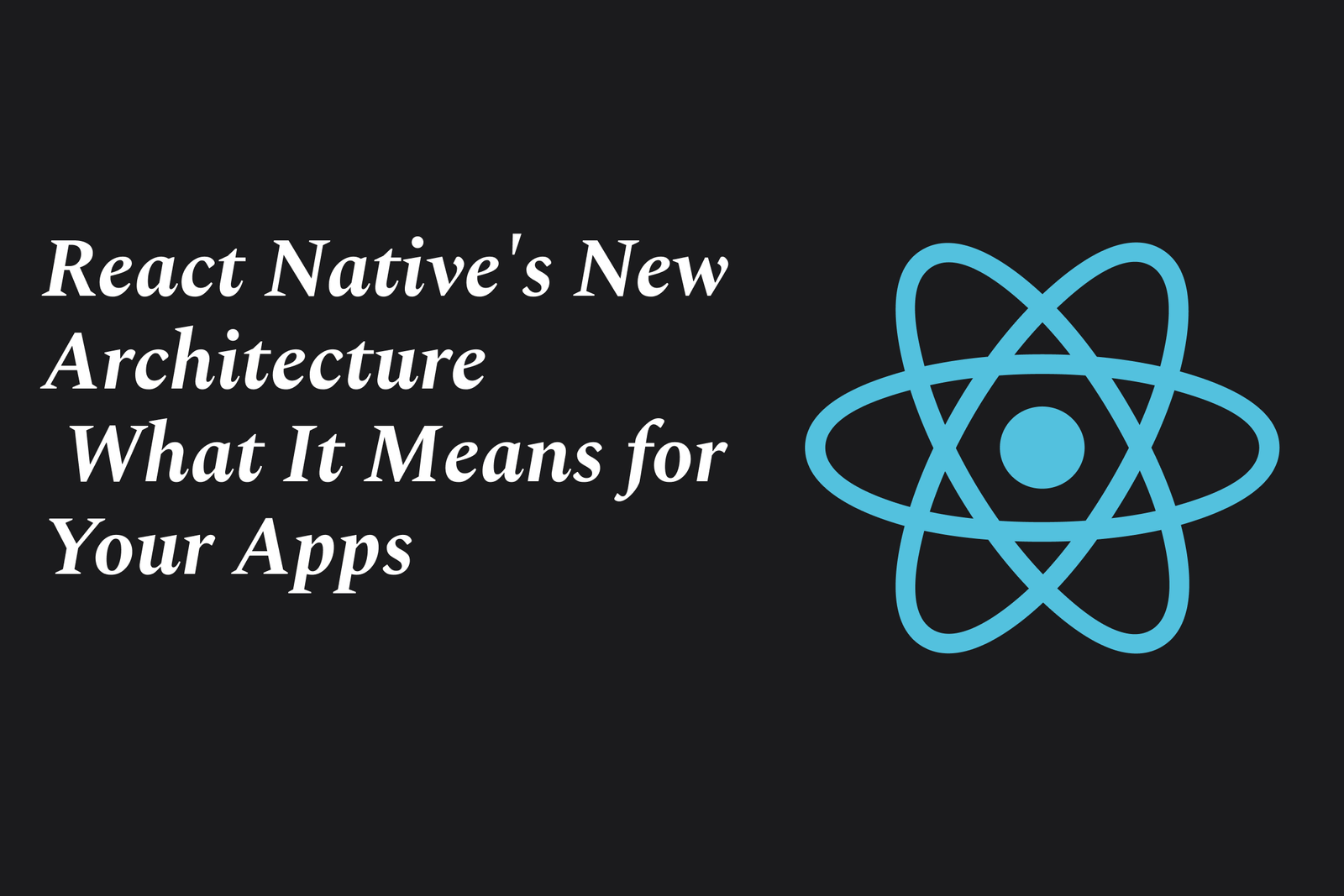React Native's New Architecture: What it Means for Your Apps
React Native's New Architecture is a complete overhaul that enables smoother UI with synchronous layouts, supports React 18+ features like concurrent rendering, and improves performance. It future-proofs your apps, though migration requires checking library compatibility and gradual adoption.
React Native's New Architecture: What It Means for Your Apps
1 ) Introduction to the New Architecture
Since 2018, the React Native team has been redesigning the framework's internals to enable creation of higher quality mobile experiences.
The New Architecture is a complete refactoring of React Native’s core, designed to overcome limitations found in the legacy framework.
It has been available experimentally since React Native 0.68 and became the default as of version 0.76.
Major apps at Meta have successfully adopted it in production.
2 ) Reasons for the New Architecture
The legacy architecture imposed fundamental limitations that hindered creating polished UI experiences.
The New Architecture unlocks capabilities that were impossible before, making it a future proof foundation.
3 ) Key Features and Improvements
Synchronous Layout and Effects:
Instead of relying on asynchronous onLayout events which cause visual glitches ("jumps"), the New Architecture allows synchronous reading and updating of layouts during rendering. This synchrony eliminates intermediate visual states, delivering smoother UI experiences.
Support for Concurrent Rendering:
Enables React Native to adopt modern React 18+ features such as Suspense for data fetching and Transitions, improving UI responsiveness and user experience.
4 ) Impact on Development Tools and Ecosystem
Expo SDKs 52 and above support the New Architecture; as of mid 2025, around 75% of Expo projects built with EAS Build are using it.
The Expo Modules API automatically supports the New Architecture, so custom native modules built with it require no changes.
Tooling such as Expo Doctor integrates with React Native Directory to help developers verify third party library compatibility.
5 ) Migration Considerations
While the New Architecture is recommended as it is the future path, many apps may not see immediate benefits.
It should be viewed as an investment for maintaining compatibility with upcoming React Native features and performance improvements.
Some libraries and dependencies may still lack full support; developers are encouraged to validate compatibility using available tools.
The legacy architecture will be deprecated, with a possible removal target in late 2025, making migration mandatory for future upgrades.
6 ) Community Feedback
Some developers have disabled the New Architecture on their projects due to incompatibility issues with certain libraries.
Overall experience varies; performance improvements are noticeable especially in UI smoothness and feature availability.
Summary
React Native’s New Architecture is a fundamental overhaul to enable smoother, more concurrent friendly, and future proof mobile app development. While migration is an investment with gradual ecosystem adaptation, it unlocks important React 18+ features and improves layout handling. Developers should start planning migration early to leverage new capabilities and maintain forward compatibility.
https://justacademy.in/news-detail/flutter-layout-grid-system-update
https://justacademy.in/news-detail/future-of-flutter-careers-post-2025
https://justacademy.in/news-detail/android-language-support-updates
https://justacademy.in/news-detail/flutter-internships-&-mentorships-2025
https://justacademy.in/news-detail/is-react-native-still-competitive-with-flutter?
Related Posts
Java supports GDPR and data privacy by enabling secure data handling through encryption, controlled access, and precise data management. It allows developers to minimize PII exposure, ensure data confidentiality, and design workflows that comply with data protection regulations effectively.
Java code quality tools have evolved to include advanced static analysis, integrated security checks, and AI-powered code reviews. These updates help developers detect bugs, enforce coding standards, and enhance security, streamlining the development process and improving overall code reliability.
Java remains a cornerstone in big tech companies, evolving with modern features like records, pattern matching, and virtual threads. Its robust ecosystem, enhanced performance, and growing AI integrations keep it vital for both legacy systems and innovative new projects.
Java and CI/CD pipeline optimizations streamline Java application development by automating builds, tests, and deployments. They improve efficiency through parallelization, caching, and secure secrets management, enabling faster feedback loops and more reliable, scalable software delivery.
Java supports modern cryptography standards through its flexible Java Cryptography Architecture (JCA), enabling integration of advanced algorithms like AES, EdDSA, and post-quantum tools. Libraries like Bouncy Castle offer FIPS-certified, hardware-accelerated implementations for secure development.
Java 23 enhances record patterns by enabling concise, direct destructuring of record components within pattern matching, simplifying type checks and data extraction. This improvement boosts code readability and expressiveness by reducing boilerplate in handling immutable data classes.
Java remains a top choice for mobile app backends, powering scalable, secure, and high-performance server-side solutions. Latest trends include cloud-native microservices, reactive programming, and enhanced JVM optimizations, enabling efficient, flexible, and robust mobile backend development.
Java SE 24 and LTS Java SE 21 offer enhanced features and performance, while Apache Spark 4.0.0 introduces Scala 2.13 support and advanced ML and SQL capabilities. Together, they empower developers to build scalable, high-performance data applications with modern tools.
JUnit 5 modernizes Java testing with a modular architecture, improved assertions, and seamless Java 8+ support. Beyond JUnit, tools like Mockito and AssertJ enhance mocking and assertions, creating a powerful, flexible ecosystem for writing clean, efficient Java unit tests.
Java plays a pivotal role in cloud automation tools by providing a robust, platform-independent language used to build scalable automation frameworks like Jenkins and Selenium, enabling efficient CI/CD pipelines, testing, and orchestration across diverse cloud environments.










